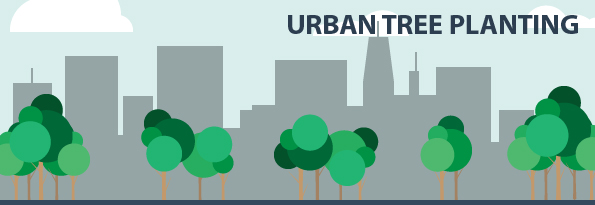West Towson Urban Reforestation

Parts of the Chesapeake Bay watershed contain a high percentage of impervious cover – paved or other hard surfaces such as roofs and roadways that prevent rain water from being absorbed into the ground. Instead, water runs along these surfaces, collecting trash and substances such as motor oil, lawn fertilizers, and pesticides. This polluted stormwater flows into streams and rivers, where it threatens aquatic ecosystems and public health.
Effective stormwater management, on the other hand, creates safe paths for polluted runoff to be captured and filtered through the ground before it reaches waterways. This helps keep the environment clean and our communities healthy!

Project location: Towson, MD
Problem: The residential streets of West Towson have historically been lined with large oak trees, which beautify the community, buttress property values, and assist with stormwater management. However, many of these trees were being lost each year due to environmental stresses and the trees’ age.
Solution: A local reforestation initiative was launched with the support of community volunteers, Blue Water Baltimore, and county stormwater fees. In a single day, approximately 75 volunteers – including homeowners and students from nearby Towson University and Goucher College – planted more than 80 trees in the Pickersgill neighborhood. This kick-off project inspired enthusiasm for the community re-greening effort, with thousands more trees planned for the following year. The new trees not only sustain community aesthetics; they provide stormwater uptake capacity, buffer noise, and improve local air quality.
Funding sources: Blue Water Baltimore; MD Department of Environmental Protection; Baltimore County stormwater fees
Partners: Blue Water Baltimore Urban Forestry Program; Goucher College; Pickersgill community residents; Towson University; West Towson Greening Committee


